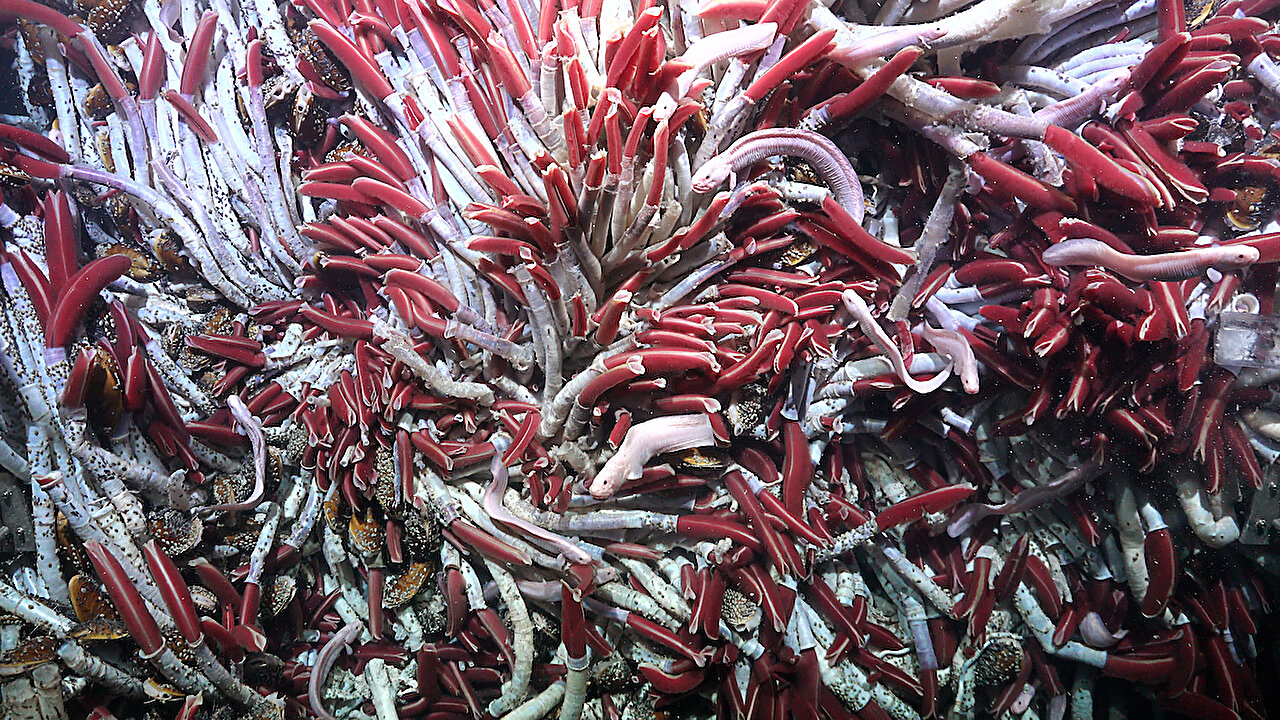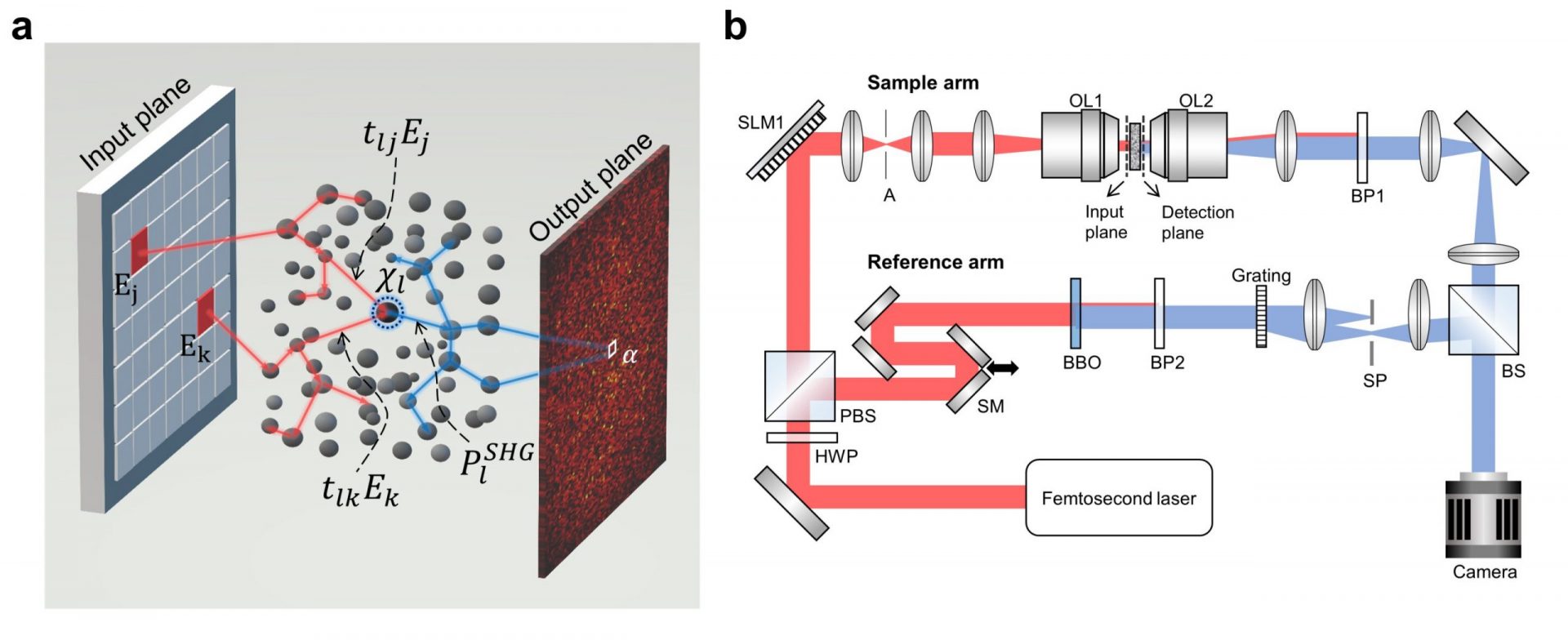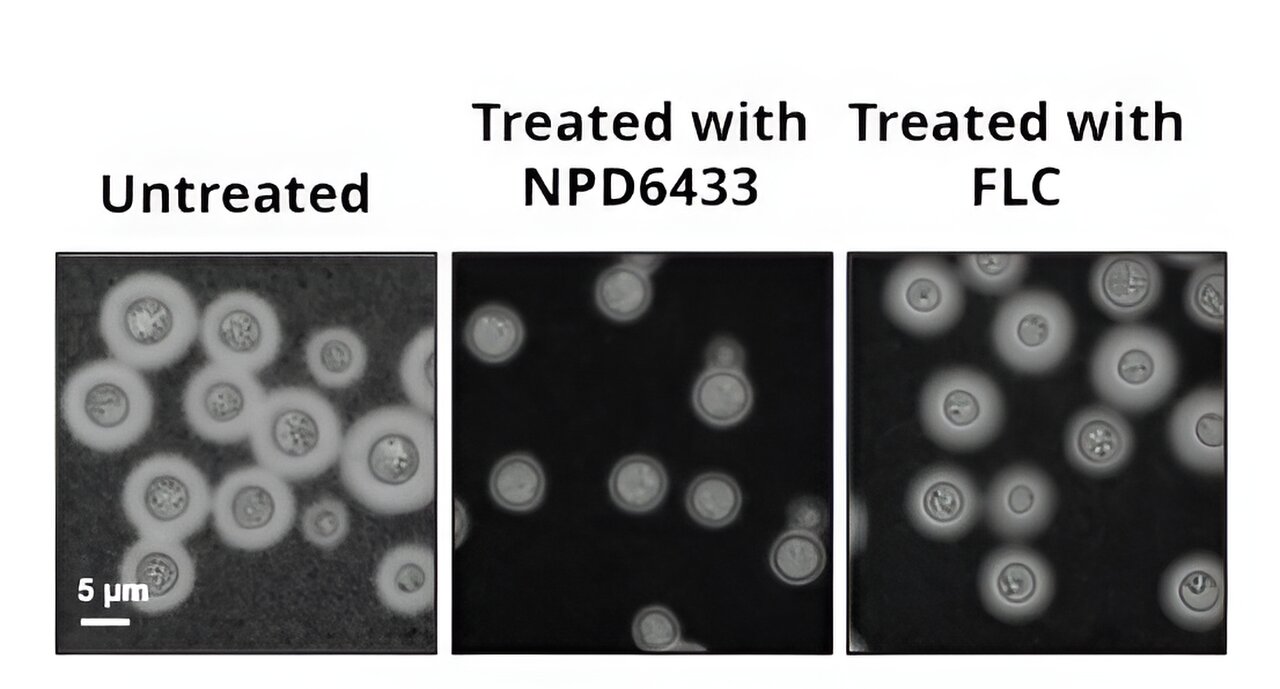A groundbreaking discovery has been made in the depths of volcanic cavities beneath hydrothermal vents at an undersea volcano on the East Pacific Rise off Central America. Led by Dr. Monika Bright from the University of Vienna, an international science team from various countries embarked on a 30-day expedition aboard the Schmidt Ocean Institute’s research vessel Falkor (too). This expedition has shed new light on the mysterious world of hydrothermal vents, revealing that their habitats exist both above and below the seafloor.
Using an underwater robot, the team made an astonishing discovery. They found cave systems filled with worms, snails, and chemosynthetic bacteria thriving in water with a temperature of 75 degrees Fahrenheit (25 degrees Celsius). This revelation has expanded our understanding of hydrothermal vents, as scientists had previously focused on studying microbial life in the subsurface, neglecting the possibility of animals living beneath these volcanic hot springs.
Furthermore, the team found evidence of vent animals, such as tubeworms, traveling beneath the seafloor through vent fluid to establish new habitats. Tubeworms are crucial to hydrothermal vent ecosystems, but their young have rarely been found in the water above these vents. Dr. Bright’s team suspects that they travel beneath the earth’s surface to create new hydrothermal communities.
“This discovery greatly enhances our knowledge of animal life at deep-sea hydrothermal vents,” said Dr. Bright. “We now know that two dynamic vent habitats coexist. Vent animals above and below the surface thrive together, relying on vent fluid from below and oxygen in the seawater from above.”
Hydrothermal vents resemble underwater hot springs that emerge through cracks in the earth’s crust due to tectonic activity. When a new vent appears, an ecosystem quickly develops as animals colonize the area within a few years. However, scientists remain puzzled about how animal larvae find these new vent fields. Dr. Bright’s team is the first to confirm that tubeworm larvae can settle and live beneath the seafloor.
To investigate whether animals travel through vent fluids, the team conducted experiments using Schmidt Ocean Institute’s underwater robot, ROV SuBastian. They attached mesh boxes over cracks in the earth’s crust and, after several days, discovered animals living below the surface in hydrothermal cavities when they removed the boxes along with the crust. The results of these experiments will be studied in the coming months.
“While we have long known about animals living in underground cavities on land and in sand and mud in the ocean, this is the first time scientists have explored animals beneath hydrothermal vents,” said Dr. Jyotika Virmani, Executive Director of the Schmidt Ocean Institute. “This remarkable discovery of a hidden ecosystem within another ecosystem provides fresh evidence of life existing in extraordinary places. Schmidt Ocean Institute is proud to have provided a platform for Dr. Bright and her team to gain new insights into these potentially vulnerable deep-sea systems.”
“Each expedition by the Schmidt Ocean Institute reinforces the need to fully explore our ocean and understand its depths,” said Wendy Schmidt, president and co-founder of Schmidt Ocean Institute. “The discovery of new creatures, landscapes, and now an entirely new ecosystem highlights how much we have yet to discover about our ocean—and emphasizes the importance of protecting what we don’t yet know or understand.”
Accompanying the science team was LA-based artist Max Hooper Schneider, who created sculptures that were filmed on the vent systems using ROV SuBastian. The hydrothermal environment provided an excellent source of inspiration for the artist, who plans to incorporate his artistic research into future exhibits. “I will forever be captivated by the mysteries of the deep ocean,” said Hooper Schneider. “These lightless ecosystems are crucial to understanding the origins of life on our planet.”
,,








